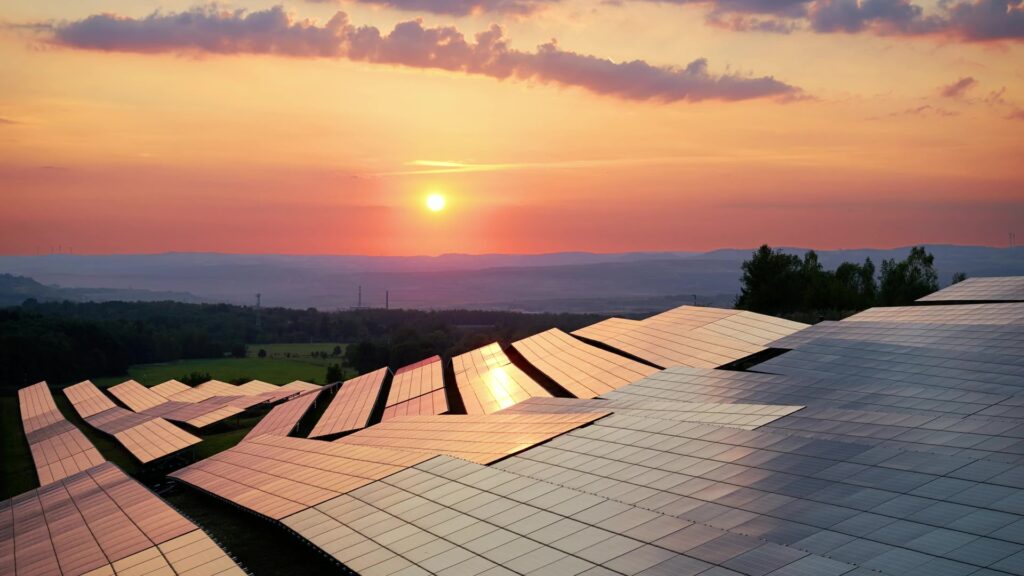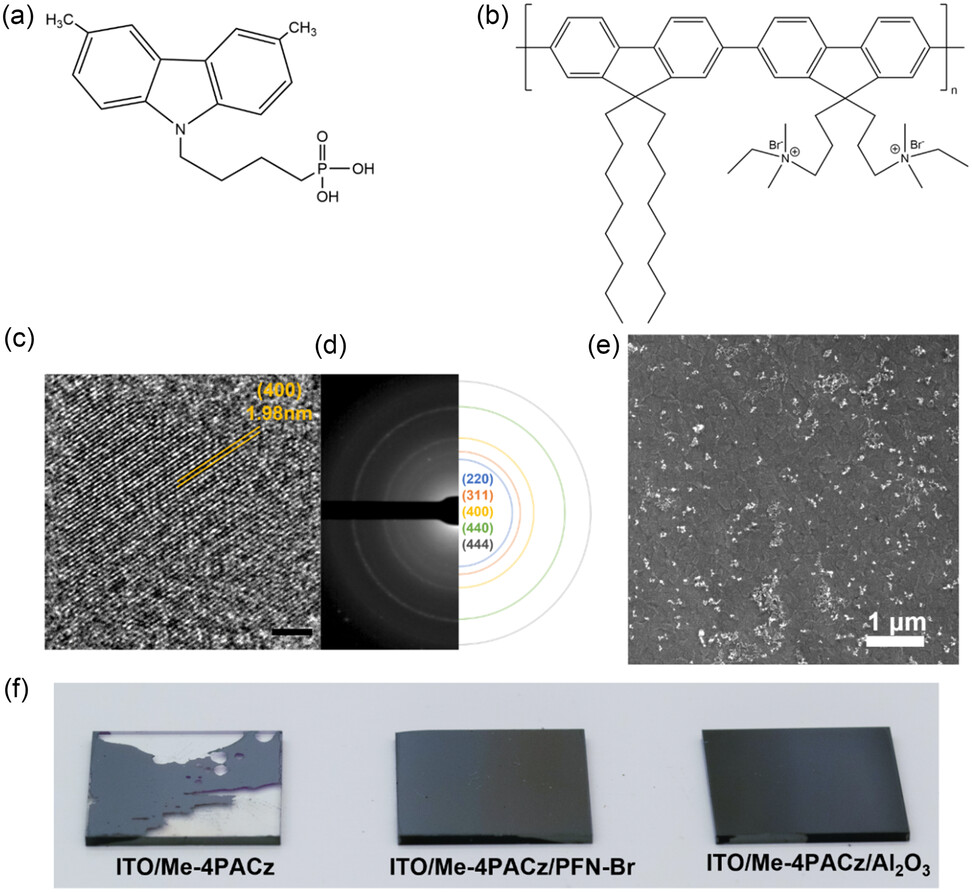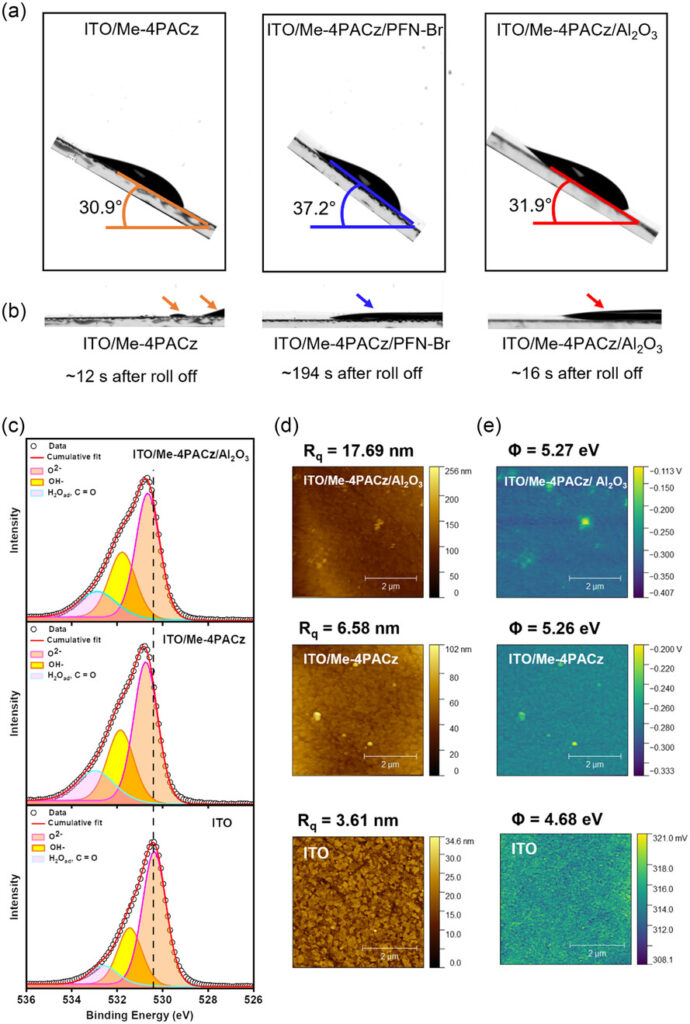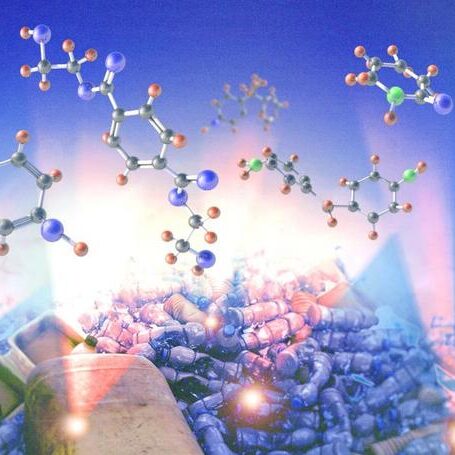From University of Surrey 25/09/23

A scientific breakthrough brings mass production of the next generation of cheaper and lighter perovskite solar cells one step closer thanks to researchers at the University of Surrey’s Advanced Technology Institute (ATI).
A nanoscale ‘ink’ coating of aluminium oxide on metal halide perovskite improves the potential of this emerging photovoltaic technology and stabilises the drop in energy output which currently plagues perovskite technology.
Hashini Perera, lead author of the study at the University of Surrey said:

“In the past, metal oxides have been shown to either benefit or degrade the performance of perovskite solar cells.”
“We’ve identified aluminium oxide which can improve performance and minimises the drop in efficiency during conditioning of perovskite solar cells.”
“We show that this nano-oxide allows a uniform coating of perovskite material on highly promising organic molecules that self-assemble on a surface and improve device output.”
Dr Imalka Jayawardena, from the University of Surrey’s Advanced Technology Institute said:
“Performance limits of traditional solar cells are why researchers are switching to examining perovskite as the next-generation solar technology, especially as applications both terrestrial and in space are rapidly growing.”

“Our key development in solar panel technology shows a cost-effective approach to scaling of perovskite solar cells, a development which could help countries around the world to reach their net zero targets faster.”
Prof. Ravi Silva, corresponding author from the ATI, University of Surrey said:
“Solar and wind energy costs are rapidly decreasing based on technology improvements, to the level where worldwide over 80% of all new additional power generation capacity is based on renewables.”
“The levelised cost of solar electricity is now cheaper than most other power generating sources.”
“With the maturing of perovskite solar modules, the levelised cost of electricity will significantly decrease further, and that is why this is such an exciting area to work.”



